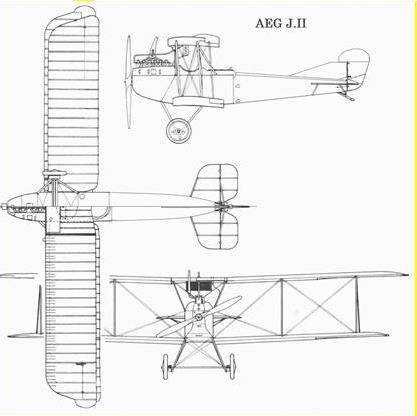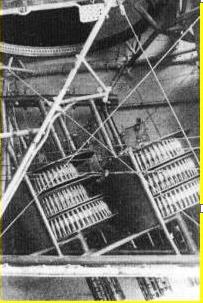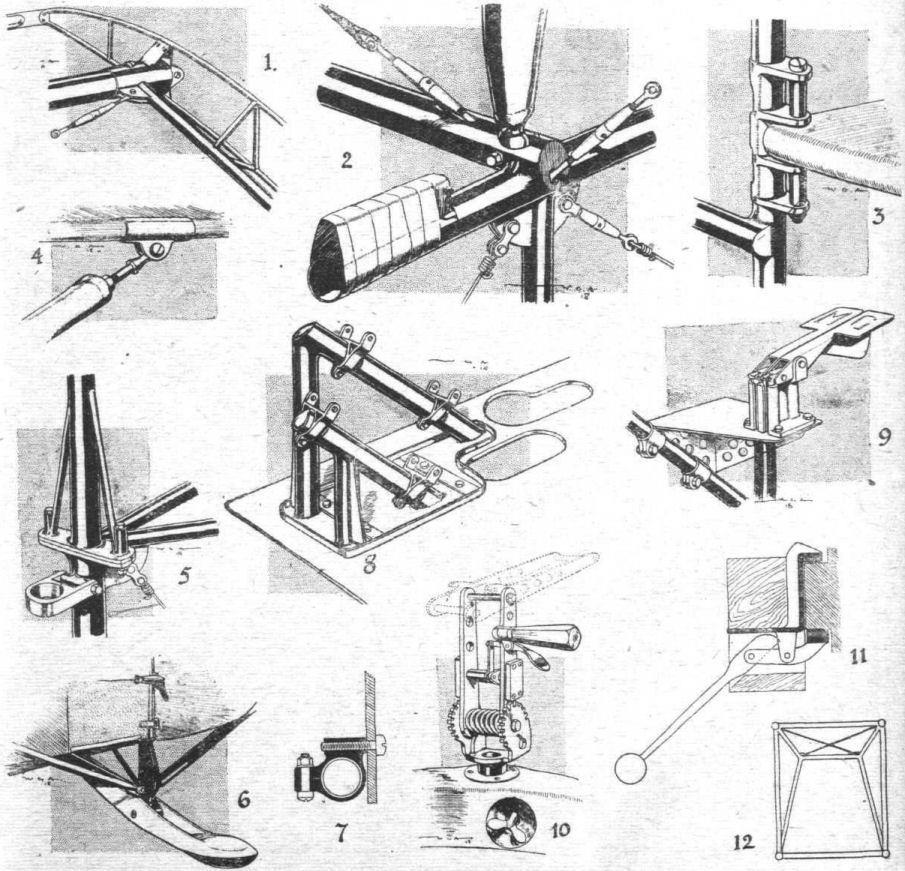In early spring of 1918, the German air force received a new armoured aircraft from the company Allgemeine Elektrizitäts Gesellschaft. It received the designation AEG J.II . Modifide compared to the JI, it had a longer fuselage and modified tail. In addition all control surfaces except the lower ailerons were tight joints, though some of these improvements began to be introduced to the JI A
The signing of the truce did not stop the production of aircraft, it lasted until 1919, although orders for planes which construction were not started were cancelled. In Germany, very quickly drew attention to the fast-growing market of passenger transportation. The development of special machines needed time. Then there was an idea to use for this purpose preserved warplanes.
One such "conversion" was AEG J.II. As a result, AEG J. II became an airliner - about three dozen of these aircraft were converted. Like most passenger aircraft converted at the time , passenger carrying AEG J. II received no special designation - sometimes in the documents the designation AEG J.IIK (from Kabine - with cabin) was used. Already at February 5, 1919 the first "civilian" J.II (p / n 13 DLR) carrying just one passenger started flights between Berlin and Weimar, the aircraft belonged to the airline Deutsche Luft-Reederei GmbH - DLR, it became the first passenger plane on a regular line in Germany. The J II transporting not only passengers but also the mail.. On April 15 another flight Berlin - Warnemünde.was introduced.
DLR in 1923 lost at least five planes (D.22 (ex 14 DLR), D.23 (ex 36 DLR), D.25, D.26, D.150). At least two aircraft from the DLR were transferred to "Etude Aeriens - SNETA, and a few other machines have appeared in the Europa-Nord-West-Flug..
First, the design did not differ from combat AEG J. II. Later alterations introduced the "civilian" look. The changes affected primarily the fuselage, took off the armor and weapons, it is possible to achieve acceptable performance by weight reduction . The back of the passenger seat was covered and at the front, although it was closed, . By 1920, the plane underwent extensive modernization , a cabin, which now began to resemble the body of a limousine. For its time, interior could be considered quite comfortable, well lit and ventilating, passengers (which is now two) placed on wicker chairs set against each other. They climbed on board through the door on the left side.
In addition to the airline Deutsche Luft-Reederei AEG J. II was used by Deutsche Aero Lloyd. The aircraft differed from the DLR machines primarily with elongated rear spats, and most renovations happening at the company, headed by Carl Gryulihom. This enterprise was in a suburb of Berlin - Staaken and owned the airline. Aero Lloyd used AEG J. II until 1925
1. Wing-Spar Butt and intermast Ribs of the A.E.G. 2. Centre-Section Strut and Fuselage Junction of the A.E.G. 3. Tail-plane Adjustments. 4. Tail-stay Adjustments. 5. Rudder-post Arrangements. 6. Tail-skid Arrangement. 7. Method of Attaching Armour. 8. Method of fixing guns to fire through floor. 9. Triggers for fixed guns. 10. Cradle for Movable Gun. 11. Locking device for Movable Gun. 12. Method of Fuselage Bracing.
| Type |
Werk.Nr |
Registration |
History |
|
|
D-124, DLR 4 |
DLR |
|
|
D-320 |
DLR |
|
413 |
D-20 |
|
|
415 |
D-21 |
Deutscher Aero Lloyd in 1925, former D-82, fate unknown |
|
415 |
D-82, DLR 15 |
DLR to Deutscher Aero Lloyd 06.02.23 |
|
416 |
D-22, DLR 14 |
DLR |
|
419 |
D-23, DLR 36 |
DLR |
|
|
D-61, DLR 32 |
DLR |
|
|
D-58 |
DLR to Deutscher Aero Lloyd 6/2 1923, in Aug 1924 to Danziger Aero Lloyd |
|
|
D-151, DLR 39 |
DLR to Deutscher Aero Lloyd to Adria Aero Lloyd |
|
6840 |
D-5 |
DLR. Cancelled 28th of January 1920 |
|
|
D-6 |
DLR. Cancelled 28th of January 1920 |
|
6844 |
D-7 |
|
|
6845 |
D-8 |
DLR. Cancelled 28th of January 1920 |
|
310 |
D-479 |
DLR Berlin NR. 97. to SWEDEN 1873 1920 |
|
6839 |
D-25 |
DLR |
|
6865 |
D-26 |
DLR |
| Type |
1 + 2 passenger conversion |
| Engine |
1 Benz Bz IV |
| Dimensions |
Length 7,92 m, height 3,35 m, span 13,46 m, wing aera 34,5 m2 |
| Weights |
Empty , loaded , max. take off weight 1819 kg |
| Performance |
Max. speed 152 km/h, cruising speed 140 km/h, service ceiling 4500 m, range 590 km |



